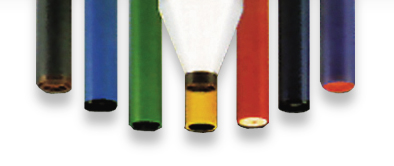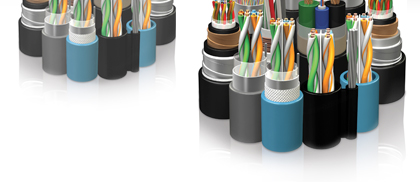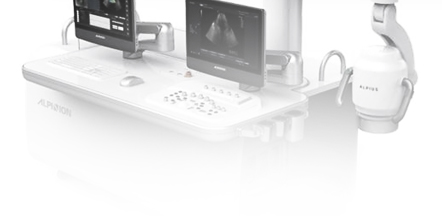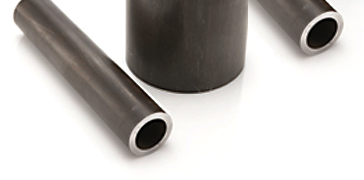Iljin Museum
Technology
Electric Transformation Metals
1969-Electric Transformation Metals
Development of Electric Transformation Metals for the first time in Korea, as well as ILJIN’s first case of technology localization
 1969
1969
Electric transformation metals are parts used to connect electric power supply facilities that supply electricity to homes or factories, and is an essential part for the supply of electricity. Back in the 1960s, however, all of these parts were imported from developed countries including the US.
Chairman Huh, Chin Kyu regretted the fact that the supply of electricity, a fundamental infrastructure that ensures national economic growth, was entirely dependent on foreign technology. To overcome this, he embarked on the localization of this technology and succeeded in 1969, within 2 years of the company’s foundation.
ILJIN’s Electric transformation metal is the first technology successfully localized by ILJIN, and the first domestically developed electric transformation metal in Korea.
1971-Electric Supply Metals
Substantially Reducing the Risk of Power Outages
 1971
1971
Electric transformation metals are limited in its use to electric substations within the entire process of the production and supply of electricity. Aluminum alloy metals for electricity, on the other hand, are basic materials that are widely used in the electricity industry from power transmission to power distribution. ILJIN developed aluminum alloying techniques in 1971. Aluminum alloy metals were also imported from Japan, but ILJIN was able to develop the technology required to produce these basic materials, ensuring a massive import substitution effect for the future.
When it was first developed, these metals used an alloy of aluminum and copper as its base material which had satisfactory levels of conductivity and corrosion resistance, but had a high risk of power failure because of its weak tensile strength. Alloy metals developed by ILJIN alloyed a regular amount of silicon, magnesium, and titanium with aluminum, and carefully added calcium, copper, manganese, and zinc.
This alloyed metal had an increased level of tensile strength and hardness without losing any conductivity, while also prevented corrosion and cracks, thereby reducing the risk of power outages as a result of disconnected lines. This technology also strengthened ILJIN’s early position equipped with sound technology which ensured the future growth of the company. Aluminum alloy technology also gave birth to electric supply metals.
These metals connect power lines through which high voltages travel, an d is a core metal that requires high levels of conductivity, tensile strength, and hardness. ILJIN led the surge towards localization of the electricity industry that before was entirely dependent on imports from the US and Japan.
By domestically developing and producing the major parts of the electricity industry, which is the foundation of economic growth, ILJIN without a doubt not only created a great import substitution effect, but also largely contributed to the electricity supply movement to farming and fishing towns in the 1970s. ILJIN products made possible the switch from kerosene lamps to light bulbs possible in these rural areas.
1975-Curtain-Wall Construction Technique
Beautifying Urban Buildings with Curtain-Wall Construction
 1975
1975
Growing as a producer of metals for the transformation and supply of metals, ILJIN first adopted the curtain-wall construction technique for building exteriors and developed colored aluminum chasses. Curtain-walls are nondearing walls that use metals, glass, stone, and panels to protect construction from rain and wind while also preventing excessive noise.
This technology realizes the beauty of architecture that beautifies the exterior of buildings by reducing the weight of buildings, minimizing construction costs by allowing construction work on the interior, and enabling the use of various materials to express different colors.
Before ILJIN adopted the curtain-wall construction technique for the first time, buildings in Korea all had similar exteriors that used cement and stones for reinforced concrete. The cities in Korea began to change colorfully with ILJIN’s curtain-wall construction technique. Also, ILJIN produced colored aluminum chasses for the first time in Korea, while also acquiring Korea Standard (KS) certificates for aluminum section members in 1976, reaffirming ILJIN’s reputation for technology.
In particular, ILJIN’s aluminum chasses including white chasses were so popular that clients had to first make their payments and wait for the products to arrive, or would spend nights at ILJIN to receive the products.
1975-Copper-clad Steel Wires
Revolution in Communication Lines
 1975
1975
Copper-clad steel wires are steel electrical wires that surfaces are coated with copper to increase conductivity. In the 1970s, all the communication lines used outdoor phone lines produced by Korean electric wire companies made out of copper.
However, this was not enough to satisfy the needs created by the Korean government’s intensive economic development plans and the modernization of rural areas project. Furthermore, these lines were vulnerable to natural disasters such typhoons and monsoons that would disconnect these lines. Copper-clad steel wires were perfect in replacing copper wires since it was cheaper than copper lines, and also overcoming the limits of copper lines while maintaining the electric and high frequency characteristics of copper lines.
As a result, ILJIN signed a contract to jointly develop copper-clad steel wires in cooperation with KIST. By investing 30 million won, which equaled ILJIN’s gross capital at the time, ILJIN was able to develop a new technology in 1974, which only 4 factories in 4 countries had at the time. This enabled the supply of electricity to rural areas and revolutionized communication lines.
Soon after, ILJIN signs its first large-scale product supply contract with Iran. The contract was won by competing with a US firm, and was meaningful because it signaled international recognition of ILJIN’s technology. The margin between ILJIN’s and the US firm’s contract was a mere 20 dollars.
1982-Bobbin for Chemical Fibers
Correcting the Dependence on Imports from Japan, Occupying 100% of the Domestic Market
 1982
1982
Bobbins are reels in textile manufacturing equipment that wind threads. Bobbins rotate at high speeds to reel in the thread, and is a difficult to produce component because the roundness has to be good in order for the thread to not snap, while the strength has also be high.
Even during the early 1980s, when Korea was a textile power, there were no Korean companies that produced bobbins. ILJIN realized the domestic markets complete dependence on Japan and began development of bobbins. At first ILJIN pursued technology partnerships with Japanese companies, but faced with their reluctance to share core technology and high royalty demands, ILJIN founded ILJIN Light Metal Co., Ltd (currently ILJIN Steel) and began independent development.
After successfully developing bobbin production, ILJIN occupied 100% of the domestic market until the early 1990s, and also entered the international market from the late 1980s exhibiting the excellence of Korean technology.
1984-Foam Skin Cables
Stimulating the Progress of Korea’s Communication Market
 1984
1984
In 1984, a new technology that would impact Korea’s communication technology in general was developed by ILJIN; foam skin cables. Though copper covered cables opened the doors for Korea’s communication industry, it was limited in coping with the explosive increase in demand during the 1980s.
Foam skin cables were produced by insulating foam-polyethylene and skin-polyethylene on 99.9% pure copper, and were a great improvement from traditional low-insulated cables. In particular, these cables had great telephone connections and enabled up to 7,200 people to talk over telephones at the same time, realizing high-quality and high-quantity telephone calls.
ILJIN predicted that the low-insulated cable market, preoccupied by the major corporations, would in the next few years undergo extensive change, and began development of foam skin cables in 1983 and succeeded in 1984.
ILJIN overcame rival major corporations to advance the qualitative replacement of domestic communication lines and contributed to the Korean communication industry, once again illustrating ILJIN’s venture spirit of challenging new frontiers and new business areas amidst competition against larger companies.
1986-Elecfoil
The Fertile Grounds of the Electronics Industry
 1986
1986
Though unfamiliar to the average public, elecfoils are important materials that are necessary to printed circuit boards (PCB) and rechargeable batteries. Elecfoils are thin copper plates produced not through rolling but through electrolysis and are the core materials that produce PCBs. Recently they have been widely used for negative current collectors that are the key to rechargeable batteries.
If semi-conductors are the ‘rice’ of the electronics industry, Elecfoils are the fertile grounds, and much like the veins in human bodies is used in almost all electronic products.
The technology focuses on an evenly thin surface with electronic characteristics. The thinness of these plates use microns as their units, which is 1 thousandth of a mm. It is that thin. In general, elecfoils are 18~70㎛ thin, but recently they have become as thin as 3 or 5㎛ to fit in miniaturization of electric wiring in electronic products. Elecfoil technology is extremely high-tech, and was selected as one of the ‘100 top Korean technologies during the 20th century’ but the Ministry of Science and Technology in December 1999.
One Asian technician once noted that, “the production of elecfoils entails the same levels of stress that a potter who has spent his entire life making pottery endures when they begin to make a new piece. Even after 40 years I come across new types of defects in products.” Another western technician says that, “elecfoil technology is a ‘black art.’ It is art that is invisible. No other electronic material has the same level of spirit in their products.” Both these statements highlight how hard elecfoils are to produce.
The greatest variable in the production process of elecfoil, which is produced by coating a rotating drum with copper (99.8% or more pure) using electrolysis methods, is cleanliness. Impurities as small as small as a single mosquito can cause several hundred meters of defective products.
An appropriate temperature and humidity must be maintained in order to prevent oxidation. Also maintaining a 0.5% or less tolerance level is also difficult. The allowable margin of error for a 1 meter wide 3㎛ thin elecfoil product is 0.015㎛.
In addition, high quality electricity is also necessary. As a result, elecfoil technology is only available to developed countries with strong domestic infrastructure. An outage in power makes the production of elecfoils with the same quality impossible, and elecfoil factories that are operated 365 days a year consume billions of won in electric fees alone. Because elecfoils are used in PCBs, it also means that it is used in almost every electronic device.
Recently they have been widely used for negative current collectors that are the key to rechargeable batteries. Furthermore, specialized elecfoils are being used not only in small batteries for IT appliances, but also in secondary batteries and energy storage for automobiles.
Chairman Huh, Chin Kyu and ILJIN began attempting the localization of elecfoils in cooperation with Seoul National University in 1978, but development of the technology was difficult. When ILJIN representatives visited Japanese firms in the 1980s, they were rejected by Japanese engineers who told them to not even dream of this technology. All they insisted was that ILJIN buy their equipment by paying expensive technology royalties.
The highly restrictive atmosphere at Japanese firms made each visit less fruitful, making the localization of elecfoil technology seem impossible to reach. Because Japanese firms refused the transfer of their technology, chairman Huh, Chin Kyu even went to the rooftops of nearby hotels to view Japanese factories with binoculars. Despite these hardships, chairman Huh refused to give up. Despite two factories built in 1987 and 1993 for the mass production of elecfoil failed to get off the ground due to high quantities of defective products, chairman Huh again built the company’s third factory in 1997 by investing several hundred billion won.
After almost 20 years, ILJIN Materials succeeded in the development of elecfoil production technology that minimized defective products, After almost 20 years, ILJIN Materials succeeded in the development of elecfoil production technology that minimized defective products,
* Elecfoil is called ‘copper foil’ in the US, while Japan uses the term電解銅箔, meaning ‘ copper feet produced through electrolysis.
1987-Industrial Synthetic Diamonds
Becoming one of the Top 3 Producer of Industrial Synthetic Diamonds
 1987
1987
Industrial synthetic diamonds are produced by recreating harsh natural environments required to produce diamonds such as eruption of a volcano or earthquakes artificially. Small powdered synthetic diamonds are created by putting a cylinder shaped mixture of graphite and catalytic metal with a 6cm radius and 10cm in height in a press, then applying 50,000 atmospheres (the force of 50 tons of weight on an area of 1㎠) at 1,500℃ for an hour. This production process is a high added-value, high-tech technology certified as one of the 5 most extreme technologies in Korea by the Korean government.
Diamonds are one of the hardest materials on the planet, and also have a high level of heat conductivity.
With these characteristics, diamonds are used in a wide array of industries including in polishers in heavy industries, the production and assembly of machinery, the production of semiconductor equipment, medical surgery equipment, the production or automobile parts, the production of stone and metals, as well as space research. Because of this, it is understood that a country’s demand for diamonds is representative of that country’s industry level.
The demand for diamonds increased drastically with the rapid growth of Korea’s automobile in the 1980s, but Korea was entirely dependent on diamond imports from foreign companies such as Britain’s De Beers and US’ GE.
After embarking on development of industrial synthetic diamonds with KIST, ILJIN finally succeeded in development in June 1987, arranging the stepping stone to becoming one of the world’s top 3 diamond manufacturer. Whenever the opportunity arose, chairman Huh, Chin Kyu emphasized that, “the company needs to focus on the development of new products through the development of extreme technologies in order to compete in the fiercely competitive market of the future. ” The successful development of synthetic diamonds was the success of ILJIN group, which has grown based on the development of strategic products of high-added value that target specific markets.
ILJIN’s development of synthetic diamonds signaled an important stage in the progress of Korean industries as it became not only a producer but a future exporter of industrial synthetic diamonds.
2014-HIFU (High Intensity Focused Ultrasound)
As the only HIFU technology holder in Korea, Successfully launched first clinical HIFU system
 2014
2014
HIFU (High Intensity Focused Ultrasound) technology is a non-invasive treatment method that targets pathogenic tissues and tumors with high-intensity ultrasonic waves, and is highlighted as ‘the new generation of technology for tumor treatment.’
In 2011, ALPINION MEDICAL SYSTEMS successfully launched ‘pre-clinical HIFU system for animal testing (VIFU 2000)’ for the first time in the world and ever since, ALPINION MEDICAL SYSTEMS focused on R&D for medical HIFU development for the past years.
Finally, the efforts paid off with ALPINION’s first clinical HIFU system, ALPIUS 900. It is an unique all-in-one HIFU solution with integration of ALPINION’s accumulated know-how from acoustic engineering and advanced HIFU technology.
It was officially launched In december, 2014, and soon will be applied on various tumor treatment such as breast cancer or pancreatic cancer. ALPINION will continue to contribute to the world’s medical welfare with HIFU technology.
2012-Seamless Steel Pipes
“ILJIN’s Localization of Materials Continuing in the 21st Century”
 2012
2012
Seamless steel pipes are pipes without joints produced by using carbon steel and alloyed steel. It is an important material used in pipe lines that need to resist fluid flows at high pressures and high temperatures in automobile, heavy machinery, electricity production, energy plants, and shipbuilding industries.
The greatest strength of seamless pipes is its safety, because it overcomes the deficiencies of pipes that are produced by rolling thick steel plates and then welded at each end. Seamless pipes are produced by heating cylinder billets and drilling holes in them.
When ILJIN was developing seamless pipes, the domestic demand was increasing due to the growth of related industries. Yet, because there were no Korean manufacturers, Korean companies were dependent on the 500,000 tons of seamless pipes imported from Japan, Europe, and other regions. Because of this, seamless pipes were one of top products with an unfavorable balance of trade vis-à-vis Japan, and desperately required localization of production.
ILJIN Steel’s investment and development of seamless steel production lines was meaningful since it realized the localization of production, one of the long-cherished goals of Korea’s steel industry.
2013-Cathode Materials for Rechargeable Batteries
eading the 2 Trillion Won Market for Global Rechargeable Batteries for Electric Cars
 2013
2013
In 2013, ILJIN Materials succeeded in the localized production of Lithium Manganese Oxide (LMO) materials, which is the core material for rechargeable batteries for electric cars. LMOs are used in hybrid cars, and relied 100% on imports from Japan. ILJIN Materials succeeded in localized production after 3 years of development since 2009.
Cathodes are one of the core materials that compose rechargeable batteries that include positive and negative current collectors, anodes, separation films, and electrolytes, but are the costliest component of rechargeable batteries, accounting for approximately 35%. The global market for cathodes is estimated at 2 trillion won. While Lithium Cobalt Oxide (LCO) materials account for more than 90% of the market, there is growing pressure for the development of alternative materials due to the high price of cobalt, a rare metal.
LMOs are considered to be an appropriate alternative. LMOs use manganese as the main material, enabling it to have stable chemical characteristics while cost effective. In particular, it is considered appropriate for use in Energy Storage Systems (ESS) that require high capacity and high power, as well as rechargeable batteries in electric cars that require safety.
2014-Development of Sapphire Ingots for LEDs
Completion of the Value Chain with the Vertical Systemization of LED Production Process
 2014
2014
In 2014, ILJIN succeeded in the development of sapphire ingots, the base material for LEDs, and began mass production. The core technique of production of sapphire ingots is the growth technology that grows aluminum oxide (Al2O3) in a vacuum for 2 weeks.
ILJIN successfully acquired independent sapphire ingot growth technology after more than 4 years of research. As a result, with the existing sapphire wafers for LEDs, ILJIN can expect a synergy between different materials and components.
During the shortage of ingot supply in 2010, the market witnessed excessive investments with existing companies expanding their production facilities as well as the joining of new companies into the market.
However, ILJIN carefully analyzed the growth trend of the LED market as well as investment trends, and predicted the future market environment, reaching the conclusion that a large investment when there was a risk of over-supply in the market would be inefficient.
Instead, ILJIN focused on improving the manufacturing competitiveness of its sapphire wafers, an area in which ILJIN had already secured world-class quality and cost competitiveness, while also continuously investing in the development of ingot production techniques in order to be able to mass produce sapphire ingots at an appropriate time.
As a result, while other ingot manufactures were unable to focus on development as they struggled with an over-supply in the market, ILJIN Display was able to improve its ingot growth technology and achieved innovation through the development of new technology.
Consequently, ILJIN group now has completed the vertical systemization of the entire process of LED production, from the production of materials such as sapphire ingots and wafers (ILJIN Display), chips and packages (ILJIN LED), and lighting (LumiRich), establishing a value chain within the group.



